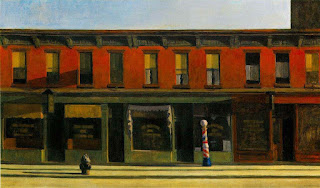Arts of Asia, Edo Period

Above is called The Great Wave , done by Katsushika Hokusai, 1830-1832. I love the different shades of blue used for the waves. The boat is also a great touch as well as Mount Fuji in the distance. Mount Fuji is the highest in Japan and is considered sacred. At the time this painting was completed the artist was 70 years old. Hokusai worked with near and far contrast in this piece. https://www.khanacademy.org/humanities/ap-art-history/south-east-se-asia/japan-art/a/hokusai-under-the-wave-off-kanagawa-the-great-wave Above is a piece done by Utagawa Hiroshige, called The Urami Water Waterfall in Niko from of Famous Places in the Sixty-odd Providence, 1853. The water fall is very strong and big. The lines stand out on this piece. The rocks in the background appear as weak and could potentially cause the rocks to fall. There looks to be hot and cold areas, blue as cool and the warm orange sun in the air. Above is a statue of Saigo Takamori placed in Ueno Park in Tok...





